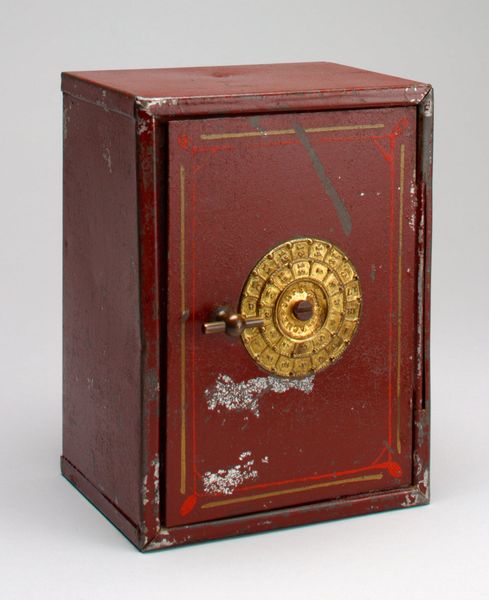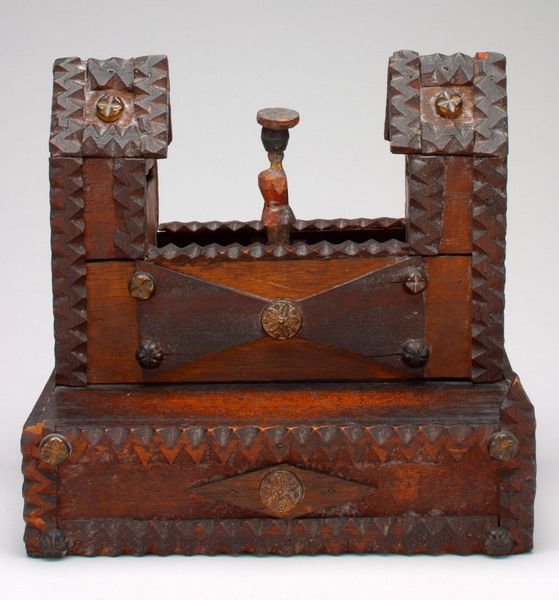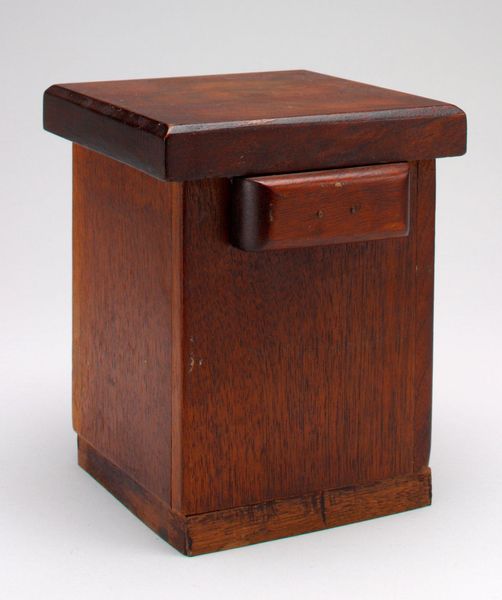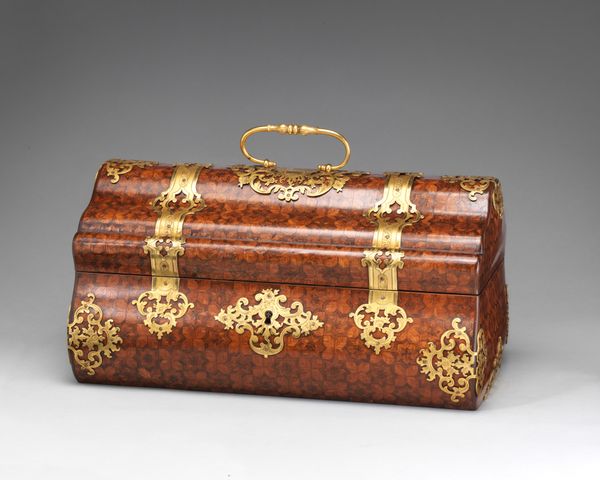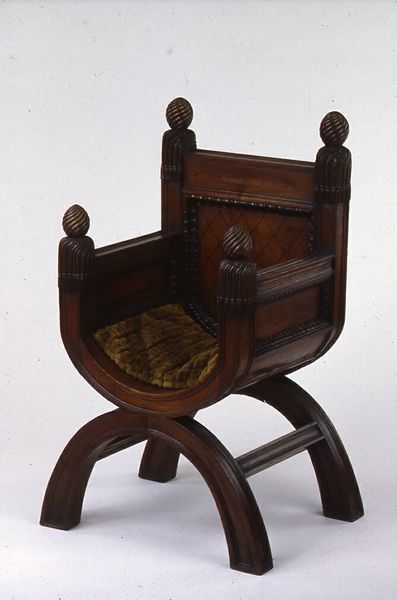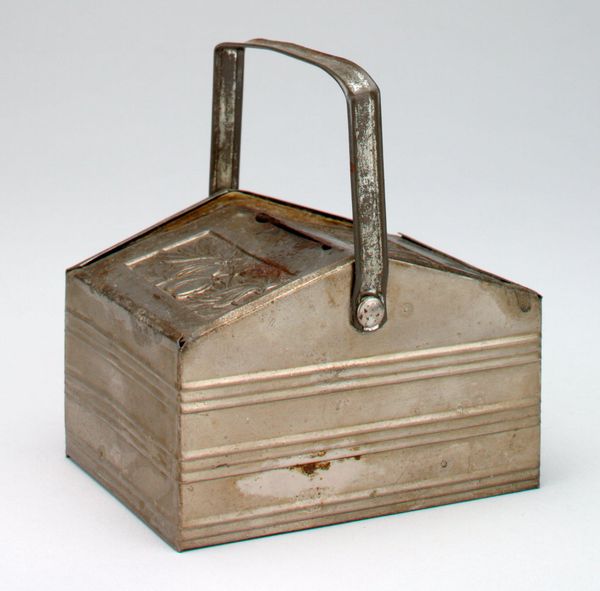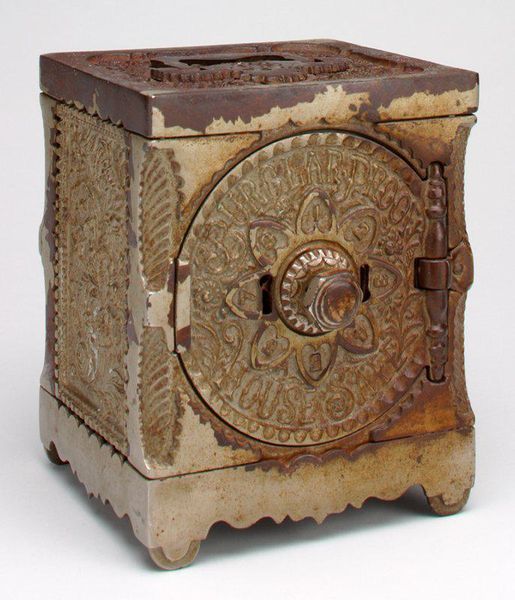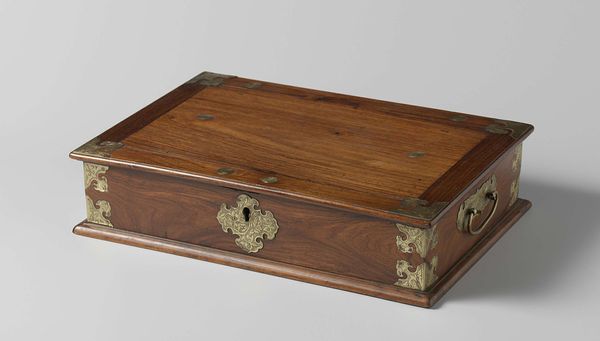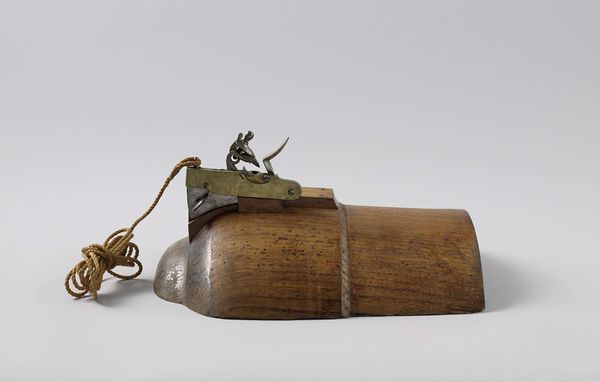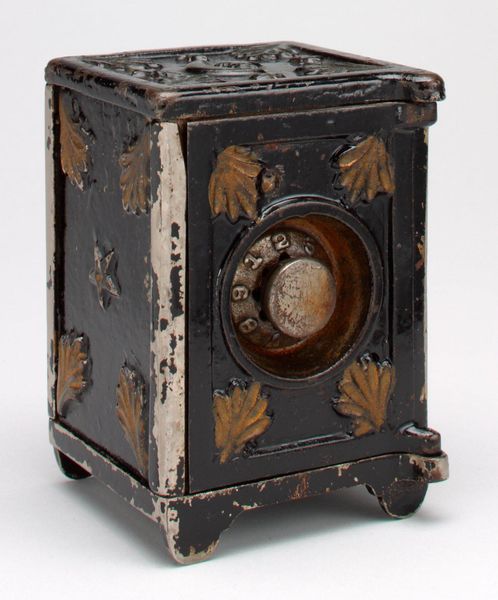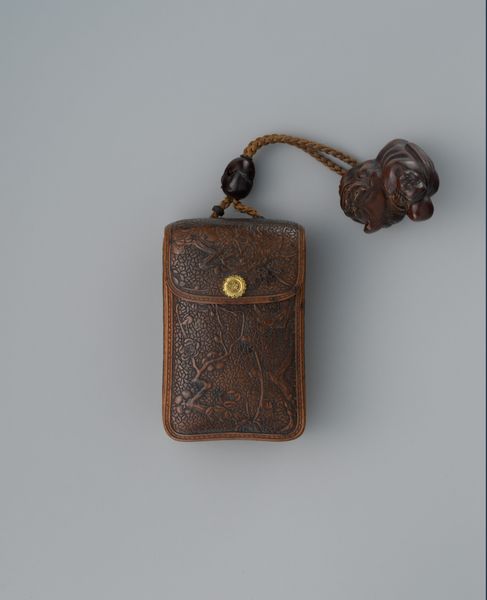
-Royal Engineers (coal scuttle)- still bank c. 20th century
0:00
0:00
brass, wood
#
3d sculpting
#
brass
#
egg art
#
3d printed part
#
product displayed
#
product fashion photography
#
sculptural image
#
unrealistic statue
#
3d shape
#
stoneware
#
england
#
wood
#
product photography
Dimensions: 5 3/8 x 3 5/8 x 5 1/2 in. (13.65 x 9.21 x 13.97 cm)
Copyright: Public Domain
Curator: Editor: We’re looking at a “Royal Engineers (coal scuttle) still bank,” probably from the 20th century, made of wood and brass. It's a quirky, miniature coal scuttle, but it functions as a coin bank. There's something unsettling about it, as if domestic labor is being valorized through militarism. What’s your take on this, framed as it is within systems of power? Curator: Absolutely. The object immediately invites a dialogue about labor, class, and the imperial project. Consider the Royal Engineers – a historically significant part of the British military, involved in both construction and conflict, extending British power. Editor: Yes, it’s almost like a juxtaposition of domesticity and military might. It’s made for saving money, yet bears this emblem of British engineering and colonial power. Is it just a souvenir, or something more? Curator: Souvenirs, especially those linked to colonial entities, are never 'just' objects. They are condensed symbols, narratives frozen in time, laden with social and historical meaning. How does an object like this subtly reinforce national identity, perhaps obscuring the more brutal realities of empire, and perpetuating social structures? Editor: That’s a good point. By presenting this as a mundane object, like a money bank, it almost normalizes this intersection between empire and the home. Is there something about this “everydayness” that made it effective as a tool for social commentary or indoctrination, maybe? Curator: Precisely. The intimacy of the object - being small and handled daily – allows ideas of empire to subtly penetrate personal spaces. Think about Gramsci’s theory of hegemony and how culture reproduces dominant ideologies through commonplace things. How might such an object reinforce particular views of British society? Editor: It reframes our understanding of seemingly benign historical artifacts as active participants in broader narratives of power and identity, something I’ll keep in mind.
Comments
No comments
Be the first to comment and join the conversation on the ultimate creative platform.
